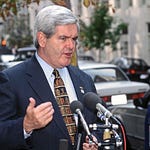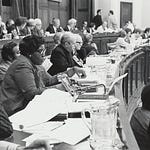
Although creativity sits at the center of many things we value as Americans—art, inventiveness, problem-solving, and all the culture industries—most people would be hard put to define what creativity is. However, to paraphrase Supreme Court Associate Justice Potter Stewart in the 1964 pornography case, Jacobellis v. Ohio, we know it when we see it.
Today, being creative is almost seen as a right, a quality that, when we are permitted or able to express it, will lead us to our best and most satisfying life, perhaps even to wealth and recognition.
But as it turns out, creativity has not always been a ubiquitous American value. In fact, Americans rarely talked about creativity until after World War II, when suddenly psychologists became curious about how the industries that had won that war could compete with the Soviet Union without taking on that nation’s totalitarian mindset. Was there a human quality that could be cultivated in a free society, something other than intelligence or the willingness to work hard, something that could be tested, measured, and discovered in otherwise ordinary people that could push the nation to even greater achievements?
That thing, the realized, was creativity: the capacity to look at a problem and solve it in a uniquely effective way or be presented with an entirely new phenomenon and harness the brainpower of multiple people to understand it.
As historian Sam Franklin came to realize in his new book, “The Cult of Creativity: A Surprisingly Recent History” (University of Chicago Press, 2023), what began as a scientific inquiry with scientific hypotheses spread like wildfire through Cold War America. The new American—whether a scientist, a military officer, a kindergartner, or a media professional—was urged to unleash creativity and given methods for doing so. While initially, creativity was the province of men, by the 1960s, feminists seized on creativity as a human right that could only be achieved through what men already had: meaningful work. Perhaps the best expression of the hold creativity had on American culture was expressed in advertising. There, “creatives,” as they were called, were revered for their ability to tap into the psyche with counterintuitive commercials that conveyed feelings rather than information, using humor to remind audiences that their product could solve a problem that hadn’t even been named.
Program notes:
The opening clip from a Jordan Peterson lecture can be found here.
You right want to listen to this classic Alka-Seltzer ad from beginning to end.
Sam addresses the idea that there is something called a “creative class:” a good follow-up here is Richard Florida, The Rise of the Creative Class (Basic Books, 2002.)
Sam namechecks science writer Jonah Lehrer: the book he refers to is Imagine: How Creativity Works (Canongate Books, 2012).
One movie that idealizes Thomas Edison as an individualist is Young Tom Edison (Norman Taurig, 1940). One influence on both Sam’s and my thinking on the classic, mid-century Western movie as a paean to American individualism is Richard Slotkin’s Gunfighter Nation: The Myth of the Frontier in Twentieth-Century America (Atheneum Press, 1992).
Sam and Claire discuss Betty Friedan’s intervention in discussions about creativity in her book The Feminine Mystique (W.W. Norton, 1963.)
In discussing the evolution of the post-World War II advertising industry, Sam cites Thomas Frank, The Conquest of Cool: Business Culture, Counterculture, and the Rise of Hip Consumerism (University of Chicago Press, 1998) and Vance Packard, The Hidden Persuaders (1957).
You can download this podcast here or subscribe for free on Apple iTunes, Spotify, Google Podcasts, or Soundcloud. And if you liked this episode, please join us!












Share this post